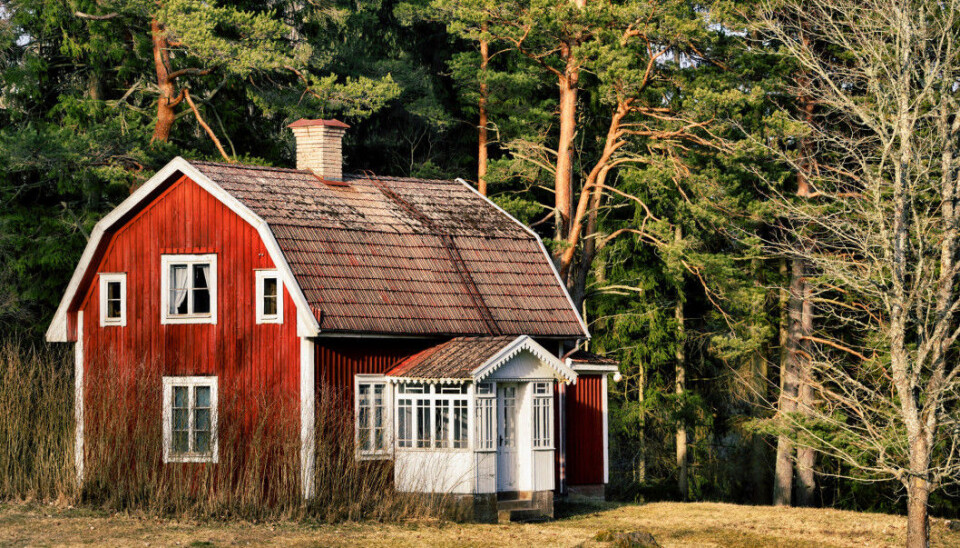
Why do young people long for a little house in the woods?
They want to live in cities, but also want a life in the country. That paradox has led to more and more young, urban middle class Scandinavians to buy second homes.
Norway’s second-home market has seen a "coronavirus boom" in 2020.
The sale of second-home properties in Sweden has also accelerated after the coronavirus epidemic hit in March, and people weren’t allowed to travel abroad.
The Swedish ethnologist Susanna Rolfsdotter Eliasson has recently completed a doctorate at the University of Gothenburg in which she interviews what she calls "a new generation of second-home owners".
A spa day in the vegetable garden
Eliasson’s subjects are middle-class couples in their 30s and 40s who live in Sweden’s big cities. Most have young children.
All of them have bought a simple cottage in the country.
She is interested in the reasons why a generation that has become accustomed to travelling on weekend trips to New York and Berlin has suddenly decided to spend their money on buying a little cottage in the woods.
This group is described by the British author David Goodhart as "anywheres".
They are urban dwellers with a high level of education. Their identity is not linked to the place where they live or the culture they grew up in. They feel at home in many places.
Why, then, do they choose to pack their cars and drive to a place where they have to mow the grass, paint fences and wash up by hand when they can go on a weekend trip to Berlin?
Eliasson believes that when this group has reached a phase in their lives, they long for a fixed point in life. Exotic destinations and vibrant cities no longer have such a great attraction for them, she wrote in her dissertation.
They would rather take a spa day in the vegetable garden.
Safety from disasters and terror
When she started interviewing her subjects about their holiday homes, the conversation quickly turned to identity and lifestyle choices.
Eliasson conducted her interviews long before the coronavirus pandemic began. But the feeling of safety offered by the proximity to nature and their own second home was one of the values they emphasized.
A second home in the country is seen as a safe place to go in the case of disaster or terrorist attack in the big city.
It is also a place where you can grow organic food and teach your children about food's journey from farm to fork, she said in a press release from the University of Gothenburg.
Not only happy
Almost half of the Swedish population has access to a second home.
Many of the parents of the people Eliasson interviewed had also purchased a second home when they established themselves. In addition, many of them owned their own house or townhouse.
This generation had improved their social status. Buying a second home was proof that they had succeeded in life.
But it’s not just satisfaction that characterizes the new generation of owners of Swedish cabins or summer cottages, the researcher believes.
Lots of guilt
They also have a lot of guilt.
Several of Eliasson’s subjects said they felt guilty for leaving their second home empty for large parts of the year, knowing that there are people in the community at large who need housing.
They feel guilty because they use a lot of electricity.
They feel guilty because they drive their cars back and forth to their second homes while at the same time striving for a more sustainable lifestyle.
Many people think that they have to compensate for this by reducing food waste or travelling by public transport in the city.
Nine out of ten rely on their cars
Eivind Farstad, a researcher at the Department of Transport Economics, says that trips to second homes clearly result in greenhouse gas emissions.
He and his colleagues haven’t calculated just how big the climate impact is from this travel, but they have calculated that nine out of ten Norwegians use their cars when they go to their second homes.
Second-home owners in the Oslo area drove to their second homes almost one million times in 2018.
To date, second-home owners’ use of electric cars is limited, and the public transport offer is also quite limited.
“Part of the problem is that second-home owners want to have flexible departure times. They want to bring luggage, shop along the way and maybe also pick up people in several places on the way to their cabin,” Farstad said.
Translated by Nancy Bazilchuk
Source:
Susanna Rolfsdotter Eliasson: Längtans och drömmarnas hus - Ideal och praktik bland en ny generation stugägare, (The house of longing and dreams - Ideals and practice among a new generation of cottage owners), doctoral dissertation at the University of Gothenburg. In Swedish.































